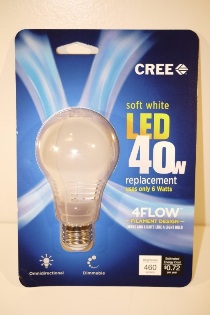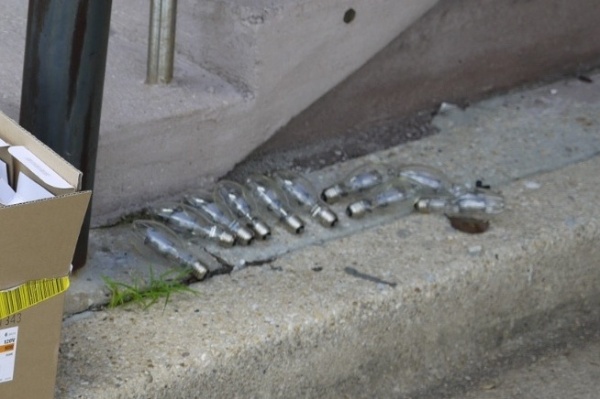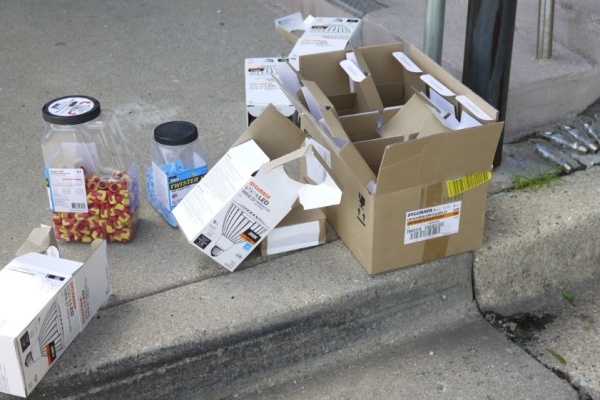 Again, welcome to 2015. And a happy 2015 it is, at least in energy. Not only have LED lamps fallen in price drastically from just a few years ago, but they continue to improve, in multiple respects. Cree, one of the bigger names in LEDs, didn’t just release their groundbreaking lamp about a year ago. They’re now on their generation-2 product, and yes, competition has improved the breed.
Again, welcome to 2015. And a happy 2015 it is, at least in energy. Not only have LED lamps fallen in price drastically from just a few years ago, but they continue to improve, in multiple respects. Cree, one of the bigger names in LEDs, didn’t just release their groundbreaking lamp about a year ago. They’re now on their generation-2 product, and yes, competition has improved the breed.
I’ve just installed Cree’s “4flow” LED lamp. I bought this standard Edison base (“A19”) in 40-Watt equivalent. Actual consumption is 6W, saving 34 nega-watts, or 85% less than an incandescent bulb of the same light output. That’s also a savings over a compact fluorescent, though far less. The big trick is getting rid of incandescents, which have only a few percent light efficacy. The other ~97% of the electricity you put in is wasted as heat. Basically, incandescents are little heaters that, oh by the way, make some light too. But unlike fluorescents, LEDs turn on instantly. They’re vibration, cold, and cycling resistant. Their lives aren’t shortened by on-off cycles, such as bathroom and hallway installations. Nor do they contain any mercury, though the mercury level of CFLs has been exaggerated. Continue reading



 just under that mental barrier. $10 now got me 32
just under that mental barrier. $10 now got me 32
You must be logged in to post a comment.